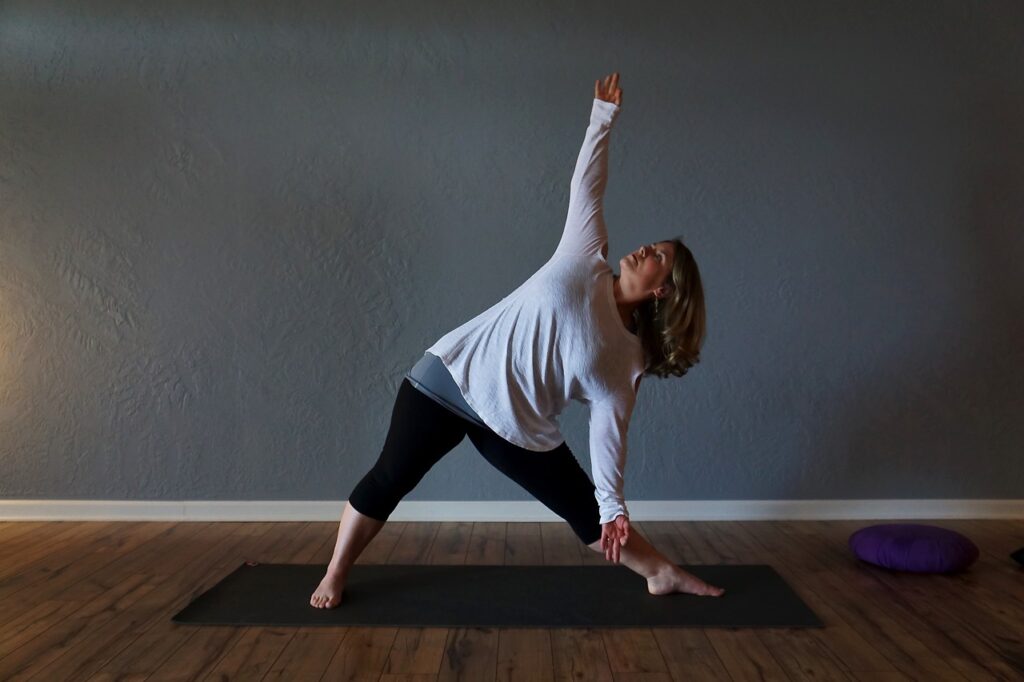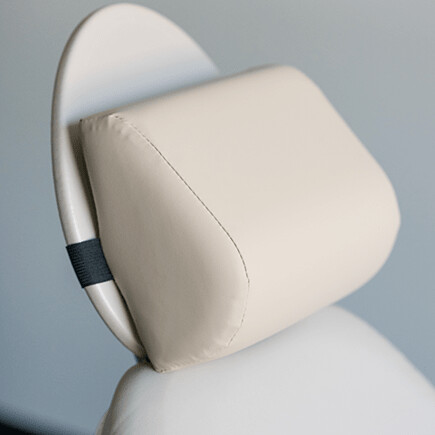The Best Stretches and Exercises for Dental Hygienists

As a dental hygienist, you spend countless hours in static positions, often hunched over patients, which can lead to a variety of physical discomforts and long-term issues. From neck and back pain to wrist and shoulder strain, the physical demands of your work can take a toll on your body. The good news is that with the right stretches and exercises, you can significantly reduce this strain, enhance your comfort, and protect yourself from long-term injuries. Additionally, using dental chair accessories like dental headrests can help improve your posture and overall health.
Types of Pain and Discomfort Dental Hygienists Experience
Due to the repetitive and static nature of their work, dental hygienists often experience discomfort in various parts of their body. Some common areas affected include:
- Neck and Shoulders: constantly leaning forward and working in awkward positions can cause tension and pain in the neck and shoulders. This strain often leads to chronic stiffness and discomfort in these areas.
- Lower Back: poor posture and prolonged sitting without adequate lumbar support can lead to lower back pain. This pain can worsen over time if not addressed.
- Wrists and Hands: repetitive motions while cleaning patients’ teeth can lead to wrist and hand strain, potentially resulting in conditions like carpal tunnel syndrome.
- Hips and Legs: prolonged sitting or standing without proper support can cause discomfort in the hips and legs, leading to stiffness and pain, especially after long work shifts.
The Causes of Pain and Discomfort in Dental Hygienists
The physical demands of dental hygiene work are the primary contributors to the aches and pains experienced by professionals in this field. The most common causes include:
- Poor Posture: leaning over patients for extended periods, especially without proper ergonomic support, places excessive strain on the neck, shoulders, and back.
- Repetitive Movements: constantly using your hands and wrists to hold instruments and perform fine motor tasks can lead to overuse injuries such as carpal tunnel syndrome or tendinitis.
- Static Positions: holding the same posture for long periods can cause muscle stiffness and tension, particularly in the lower back, neck, and shoulders.
- Improper patient positioning: When patients aren’t positioned correctly in the dental chair, hygienists may have to bend or twist in awkward ways to reach the patient’s mouth, further increasing strain on their body.
Stretches and Exercises to Reduce Pain and Discomfort
Incorporating stretches and exercises into your daily routine can help reduce the physical strain of your work. Here are some effective techniques to target key areas:
- Neck Stretches:
- Neck Tilt: slowly tilt your head to one side, bringing your ear toward your shoulder. Hold for 10-15 seconds, then switch sides. This stretch helps relieve tension in the neck and upper shoulders.
- Chin Tucks: sit or stand with good posture, and slowly tuck your chin in toward your chest. Hold for a few seconds, then release. Repeat 10 times to strengthen and stretch the muscles in your neck.
- Shoulder Stretches:
- Shoulder Rolls: roll your shoulders backward in a circular motion, and then forward. This loosens up the muscles and increases mobility in the shoulders.
- Cross-Arm Stretch: bring one arm across your chest and use the opposite hand to gently press it closer to your body. Hold for 10-15 seconds and switch sides.
- Lower Back and Hip Exercises:
- Cat-Cow Stretch: this yoga-inspired stretch involves alternating between arching your back (cow) and rounding it (cat) while on your hands and knees. It helps relieve tension in the lower back and improves flexibility.
- Hip Flexor Stretch: kneel on one knee with the other foot in front, forming a 90-degree angle with both legs. Gently push your hips forward to stretch the hip flexors, holding for 15-20 seconds on each side.
- Wrist and Hand Exercises:
- Wrist Flexor Stretch: hold your arm straight out with your palm facing down. Use your other hand to gently pull your fingers back toward your body to stretch the forearm and wrist. Hold for 10-15 seconds and switch sides.
- Hand Squeezes: use a stress ball or rolled-up towel and repeatedly squeeze and release to build strength in your hands and prevent fatigue.
How Proper Patient Positioning with Dental Headrests Can Help
While stretches and exercises are crucial, proper patient positioning can also make a significant difference in reducing the physical strain on dental hygienists. Dental headrests and pillows provide essential support for both patients and hygienists by keeping the patient’s head at the correct angle, reducing the need for awkward bending or twisting. Here’s how proper headrest use can help:
- Maintaining Neutral Posture: a well-positioned dental headrest helps the patient maintain a neutral head position, allowing you to work without straining their back, neck, or shoulders.
- Reducing Leaning and Reaching: with the patient’s head properly supported, you can maintain a comfortable posture without having to lean forward or reach awkwardly.
- Improving Efficiency: proper head positioning reduces the time and effort needed to reposition the patient, making procedures quicker and more comfortable for both you and the patient.
By ensuring proper patient alignment and using ergonomic headrests, dental hygienists can significantly reduce the physical strain associated with their work, leading to less discomfort and greater overall comfort.
